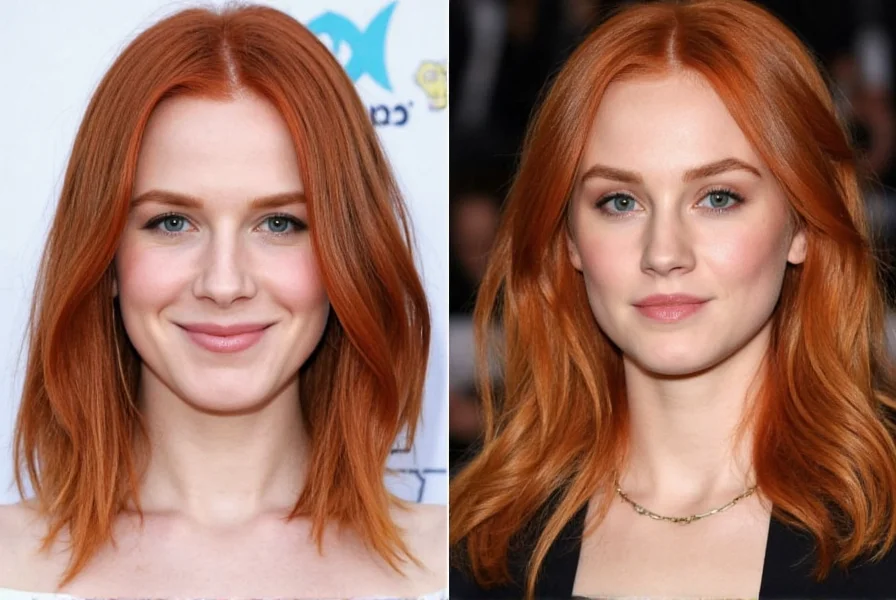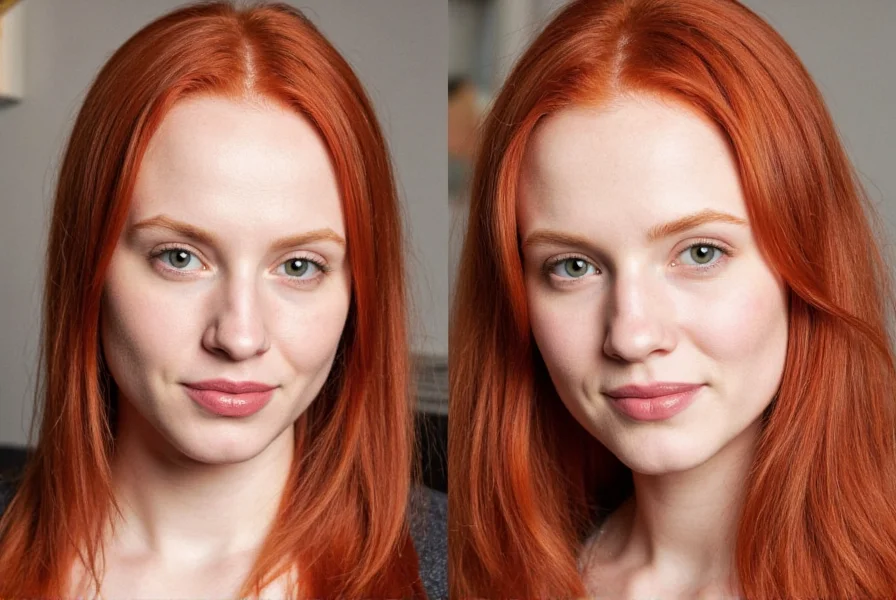Understanding the distinction between these terms goes beyond simple semantics—it reveals fascinating cultural attitudes toward red hair across different English-speaking regions. While both describe the same physical trait, their usage patterns, historical origins, and social implications create meaningful differences in how they're perceived and employed in everyday language.
Historical Origins of "Ginger" for Red Hair
The term "ginger" as a descriptor for red-haired people emerged in British English during the late 19th century. Its connection stems from the ginger root's reddish-orange color, which shares visual similarities with certain shades of red hair. Historical records show the term appearing in British publications as early as the 1880s, gradually becoming commonplace in UK vernacular.
Unlike "redhead," which directly references hair color, "ginger" represents a more indirect metaphorical comparison. This linguistic evolution demonstrates how language often creates descriptive terms through natural analogies rather than literal descriptions. The term gained wider recognition through British media and cultural exports, explaining its stronger association with UK English.
"Redhead" Terminology Across English-Speaking Regions
In American English, "redhead" has consistently served as the standard, neutral term for people with red hair. The compound word first appeared in written English during the 16th century, making it significantly older than "ginger" in this context. American dictionaries and style guides consistently list "redhead" as the preferred term without negative connotations.
Canadian and Australian English show more variation, often blending American and British influences. In these regions, you might encounter both terms, though "redhead" generally maintains a more neutral status while "ginger" carries the potential for either affectionate or derogatory usage depending on context and tone.
| Term | Primary Region | Perceived Neutrality | Historical Origin |
|---|---|---|---|
| Ginger | UK, Ireland | Context-dependent (can be derogatory) | Late 19th century |
| Redhead | United States | Generally neutral | 16th century |
| Carrot-top | Widespread (informal) | Often derogatory | Early 20th century |
Cultural Perceptions and Sensitivity Considerations
The acceptability of "ginger" varies dramatically based on context and relationship. In the UK, many red-haired individuals use "ginger" self-referentially among friends without offense, similar to how other groups might reclaim potentially negative terms. However, when used by outsiders or in mocking contexts, it frequently carries negative connotations.
Research on red hair terminology indicates that approximately 65% of red-haired Britons don't mind being called "ginger" in casual settings, while only 38% of Americans with red hair prefer this term over "redhead." This regional difference highlights why understanding local linguistic norms matters when discussing physical characteristics.
When determining appropriate terminology, consider these factors:
- The regional background of both speaker and subject
- The existing relationship between individuals
- The context and tone of the conversation
- Whether the person has expressed a preference

Modern Usage Trends and Media Influence
Popular culture has significantly shaped the evolution of these terms. British comedies like "Gavin & Stacey" and "Peep Show" have normalized "ginger" in UK media, while American productions typically use "redhead." The "Harry Potter" series, with its prominent red-haired Weasley family, uses both terms depending on the regional edition of the books.
Social media has created new dynamics in red hair terminology. Online communities like r/redhair on Reddit show increasing preference for neutral descriptors like "red-haired person" rather than either "ginger" or "redhead." This reflects broader societal trends toward person-first language and away from potentially reductive labels.
When exploring the difference between ginger and redhead in contemporary usage, it's essential to recognize that language continues evolving. Many younger red-haired individuals express indifference toward both terms, preferring simply to be identified as people first, with hair color as a secondary characteristic.

Practical Guidance for Appropriate Terminology
When discussing someone's hair color, the most respectful approach follows these principles:
- When in doubt, use "red-haired person" or "person with red hair"
- Follow the individual's preferred terminology if known
- Consider regional context—use "ginger" cautiously outside the UK/Ireland
- Avoid using either term as the primary identifier for someone
- Be mindful of tone and context, as these significantly affect perception
Understanding the subtle but important distinctions between ginger vs redhead terminology helps foster more respectful communication across cultural boundaries. As with many descriptors related to physical characteristics, the key lies in recognizing that context, relationship, and individual preference ultimately determine what constitutes appropriate language.
Is ginger the same as redhead?
Yes, both terms refer to people with red hair, but they differ in regional usage and connotations. Ginger is primarily used in the UK and Ireland, while redhead is the standard term in the United States. Ginger can sometimes carry derogatory implications depending on context, whereas redhead is generally considered more neutral.
Why is red hair called ginger in the UK?
The term "ginger" for red hair emerged in British English during the late 19th century, deriving from the reddish-orange color of ginger root. It became culturally embedded through British media and everyday usage, though its acceptability varies based on context and relationship between speakers.
Is calling someone ginger offensive?
Whether "ginger" is offensive depends on context, region, and relationship. In the UK, many red-haired people use the term self-referentially without offense, but it can be derogatory when used mockingly or by outsiders. Outside the UK, it's often perceived as more consistently negative. When uncertain, "red-haired person" is the safest neutral alternative.
What's the difference between ginger hair and red hair?
There is no actual difference in hair color between "ginger hair" and "red hair"—the distinction lies in terminology and cultural context. Ginger typically refers to lighter, more orange-toned red hair, while redhead encompasses the full spectrum of red hair shades, but these distinctions are informal and not scientifically defined.
What do you call someone with red hair respectfully?
The most respectful approach is to use person-first language like "person with red hair" or simply refer to them by name without emphasizing hair color. If describing hair color is necessary, "red-haired person" is generally preferred over either "ginger" or "redhead" as it avoids potentially reductive labeling while remaining descriptive.










 浙公网安备
33010002000092号
浙公网安备
33010002000092号 浙B2-20120091-4
浙B2-20120091-4